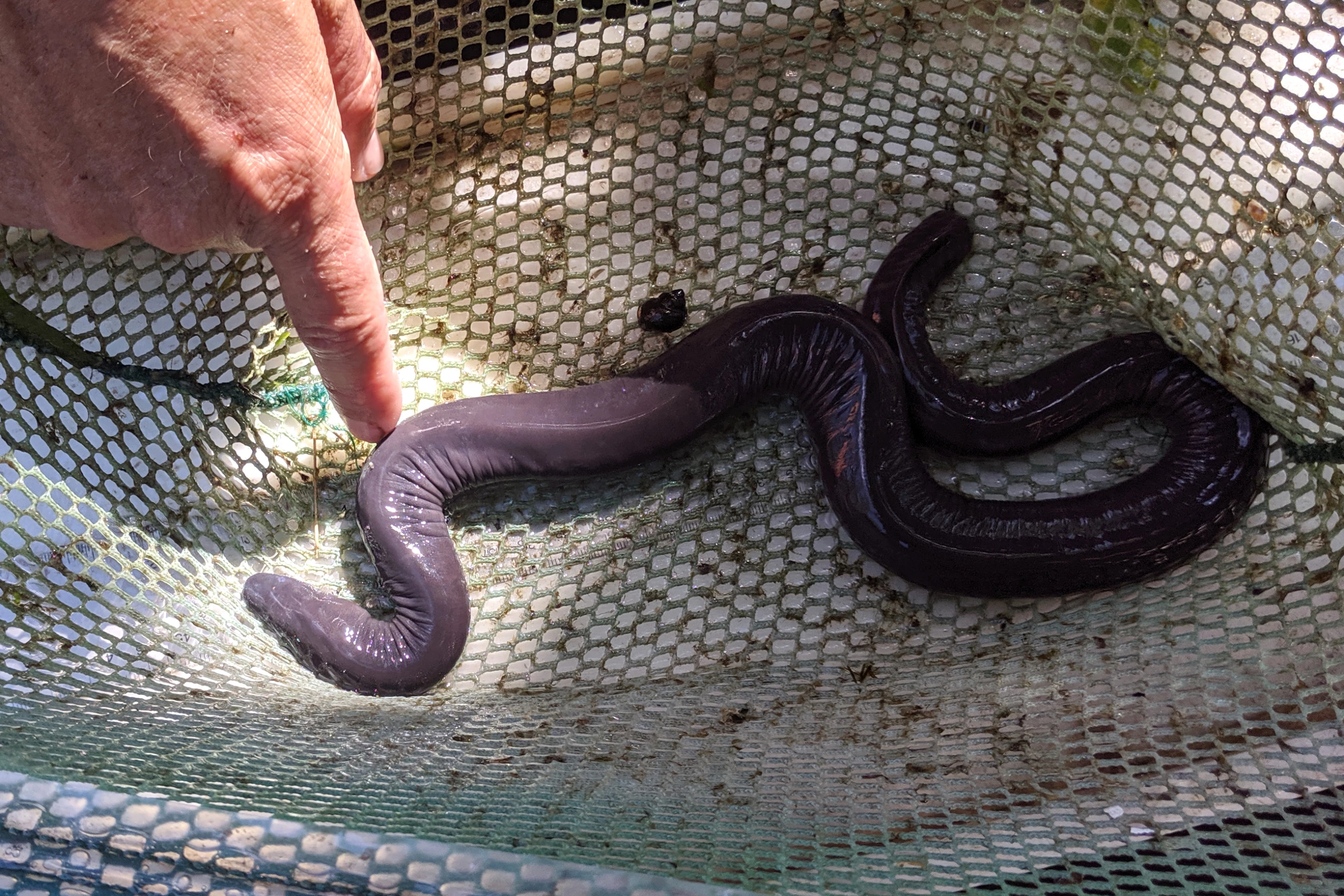Joining the ranks of creatures such as pythons, green iguanas and snakehead fish, the caecilian is the latest non-native species to be discovered living in Florida. Although it looks like a big worm, it's actually a unique type of amphibian.
Caecilians are typically found in central Africa, southeast Asia, plus South and Central America. In the Western Hemisphere, they don't occur any farther north than southern Mexico … until recently, that is.
Two years ago, Florida Fish and Wildlife workers netted a mysterious 2-foot-long (0.6-m) creature out of the Tamiami Canal in southern Florida. At the time, they sent a photograph of it to Dr. Coleman Sheehy, the herpetology collection manager at the Florida Museum of Natural History. Its body was later also sent to the museum, after it died in captivity.
Sheehy has subsequently received other caecilians collected in the canal, and now plans on conducting fieldwork to determine their numbers and range within the area.
The initial specimen proved to be a Typhlonectes natans caecilian, which is native to Venezuela and Colombia, and is the species most commonly sold in the pet trade. Given this fact, Coleman believes that the Florida population may consist of unwanted pets (or descendants of pets) that were intentionally released into the canal.

"Very little is known about these animals in the wild, but there’s nothing particularly dangerous about them, and they don’t appear to be serious predators," says Sheehy. "They’ll probably eat small animals and get eaten by larger ones. This could be just another non-native species in the South Florida mix."
Depending on the species, caecilians range in length from a few inches to approximately 5 feet (1.5 m), and can be found either underground or in freshwater aquatic environments – all of them have very poor eyesight. In recent years, scientists have determined that the creature's liver cells may hold the key to treating cirrhosis in humans, and that it is the first amphibian known to have a venomous bite.
Dr. Sheehy's research is described in a paper that was recently published in the journal Reptiles & Amphibians.





